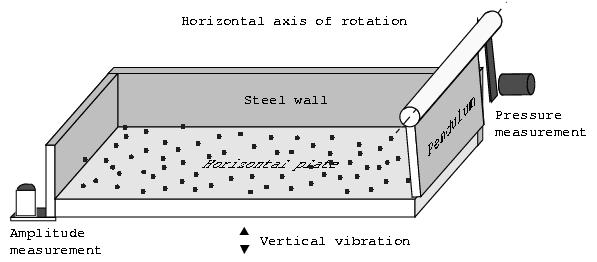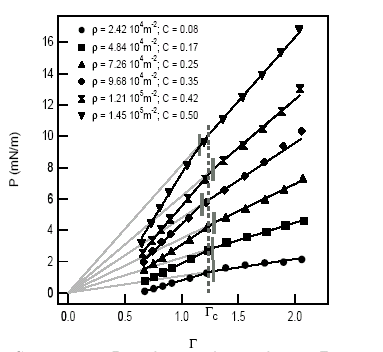
2D Granular gases
Collaboration with
Claude Laroche
Introduction
We considered experimentally the case of less than a monolayer of beads (glass or steel, monodisperse, diameter ranging from 1.5 to 3.5 mm) which is vibrated vertically on a horizontal tray (10 * 10 cm2). Seen from above, the system can be considered as a 2D granular gas when the shaking strength is large enough for the beads to experience a random motion. These systems have been widely studied during the last decade as models of dissipative gases; because of the energy dissipation due to the collisions between the particles, the velocity statistics is expected to deviate from gaussian (for instance). Hence, most studies focused on measurements of the horizontal velocities of the particles, and efforts were made in order to define the temperature of the gas. We came to the simple idea that measurement of the pressure force applied by the gas to the walls of the container could provide important information about these so-called 2D granular gases.
What we did
We measured, by the use of a pendulum, the pressure force P applied by the gas to the walls of the container (Fig.1) as a function of the acceleration (G=Aw2/g), the number density N of the particles, their individual mass m, the velovity restitution coefficient e for the bead-to-tray collisions, and the restitution coefficient e' for the bead-to-bead collisions.

Fig.1: Sketch of the experimental setup.
The most interesting, and probably most surprizing, result is that the pressure P increases linearly with G (Fig.2), the slope being proportional to the total mass of particles, and independant of their individual radius : P ~ f(e,e').NmG. These results indicate that not the temperature but the velocity is imposed by the tray: large beads, for a given G, are warmer than small ones.

Fig.2:
Pressure P vs. G for different number densities.
The number of particles is changed. The surface area of the tray
is constant.
In addition, we considered the case of the pressure equilibrium of 2 monodisperse gases made of different beads, of the pressure equilibrium at the interface between 2 regions of the tray having different restitution coefficients e. At last, we studied the temperature of single bead bouncing on the tray. The results are too numerous to be summarized herein.
Related publication
Géminard J.-C., and Laroche C., Phys. Rev. E, 70 (2004) 021301.